by DAVID LANDER
On the Monday morning after Academy Awards week, the Polo Lounge of the Beverly Hills Hotel is a hive of dealmakers. Stepping out into a drizzle, I leave the film honchos hunched over their $20 breakfasts and drive east on Sunset Boulevard, out of the manicured confines of Beverly Hills to a tawdry block in Hollywood where, amidst porno movie houses and used car lots, Doug Sax makes part of his living cutting master lacquers for other people's records.
Sax makes his own records, too, along with partner Lincoln Mayorga.
While their Sheffield Lab label has adorned a mere 23 titles since their first release in 1970, the name and orchid logo which accompanies it are well known to audiophiles. Having admired Sheffield records for years, yet meeting Sax only briefly at a Consumer Electronics Show, I look forward to a working day with him and Mayorga.
When I arrive at The Mastering Lab, which has been Sax's financial mainstay for years just as studio musicianing has kept a continuous supply of provisions on Mayorga's table, the pair is tied up in session. Andrew Teton, Sheffield's marketing director, greets me in the waiting room. It's no Polo Lounge, but there's fresh coffee and Danish, Teton's affable manner and the promise of more good company to come. Outside, the rain stops, and the Southern California sky begins to turn from gray to blue.
The Sheffield Lab partners' friendship dates all the way back to junior high school. It seems Doug Sax, then a budding trumpeter, needed an accompanist for a performance of "Tenderly." He was introduced to schoolmate Lincoln Mayorga, a pianist who, while protesting his bent was classical, sat down on a moment's notice and, without sheet music, produced precisely what was needed. After more than 30 years, Sax still seems awed by the feat.
The businesses which grew from their relationship are, Mayorga notes, "a result of our frustration with the sound of phonograph records." He recalls hearing "some wonderful qualities on the old 78-rpm classical records we had in our libraries, some virtues which were not to be found on the modern LP." One day in early 1959, Sax and Mayorga found themselves driving down Melrose Avenue, past the oldest of Hollywood's recording studios, Electrovox. On impulse the two went in and asked if they could cut a record.
Mayorga was invited to take a seat at the studio Steinway, and a short demo was cut at 78 rpm. All of the equipment used dated back to the '30s.
When they got the acetate home and played it, the pair found the absence of background noise so startling that Mayorga began "fiddling with wires to see if maybe I had not plugged in the amp or something." Then, the piano came in with such clarity that they feared the recording was cut at too high a level and would break up as the music became louder. That didn't happen. "We were in awe," recalls Sax.
"Well, it sounded like a piano in the room," explains Mayorga.
Sax continued trumpeting in the U.S. Army while his brother, Sherwood, an electrical engineer, worked with Mayorga toward his goal of making a direct-to-disc piano recording. The results continued to prove unsatisfactory and, in 1965, Mayorga was on the verge of giving up. It seemed there were just too many problems between the master lacquer and the finished record, and the cutting rooms of the day were not up to handling them.
That was too bad, the musician-composer-arranger lamented one evening to the brothers Sax, since he knew of a number of producers who were unhappy with how their tapes were transferred to disc. This was the first time any of them had thought of their audiophile endeavor in business terms, relates Doug Sax, and it resulted in the three teaming up to form The Mastering Lab. The facility, which began operations in January 1968, today cuts masters for some 10% to 15% of the top commercial records.
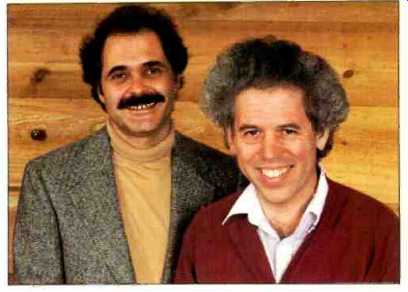
---------- Doug Sax (above left) and Lincoln Mayorga are the proprietors of
The Mastering Lab. Sax has some reservations about digital: "What I want
to hear is somehow obscured. I don't have a good time, and that defeats the
whole purpose. It doesn't have to do with accuracy or anything. Yet I can hear
absolute virtues. Absolute virtues."
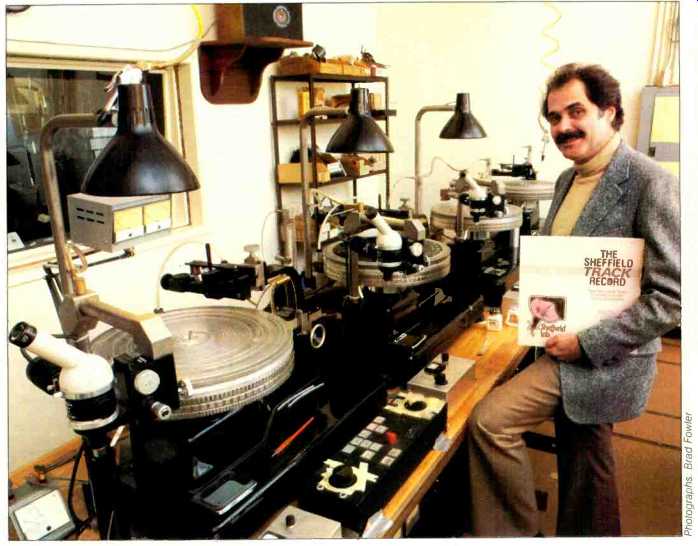
---------- "We have run digital tapes on many of our recordings,
and we'll continue to do so."
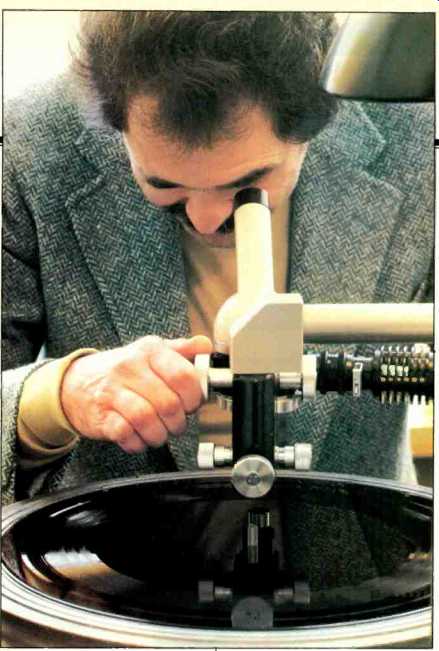
--------- "The biggest improvement, and the only broad-gauge improvement
in audio, I feel, over something that was made 15 years ago, is the improvement
of the modern phono cartridge. It's very interesting that the disc cutters
we're using are essentially 15-year-old cutters."
The first Sheffield direct-to-disc, Lincoln Mayorga and Distinguished Colleagues, Vol. 1, was released in 1970. It was sold through audio sources, a precedent, with Mayorga's mother handling distribution from her Santa Barbara home. The Sheffield titles, many of which showcase Mayorga's musical talents, quickly became standard fare for hardware demonstrations at audio salons and shows, and an allegedly primitive recording process previously relegated to obsolescence by the tape recorder had been resurrected. But not without years of work, patience and concern on the part of Mayorga, Doug Sax and his brother Sherwood, who designed the tube microphones and related tube equipment used in the Sheffield recording process.
After a morning at The Mastering Lab, Sax, Mayorga, Teton, and I lunch on lamb stew at Musso and Frank, a colorful barn of a place that claims to be Hollywood's oldest grille. From there we drive to Culver City, to the recording studio Sheffield constructed on an MGM lot just so they could record on the old soundstage where Busby Berkeley musicals were scored and Fred Astaire and Ginger Rogers re-danced the clacking of their flying feet into the soundtracks of now-legendary movies.
It's an ideal place for our interview, the control room with its tube electronics, the adjoining cutting room with its bank of modified '50s lathes. Beyond a soundproof window, a TV remake of the Susan Hayward classic, I Want to Live, is being screened. Voiceless figures flicker, ghostlike on the screen, as two old friends talk about probing the past to bring a new luster to present-day recording.
Over the years in the audio business, we've watched what many or most of us assume is a steady progression in technology. At the same time, here's Sheffield with direct-to-disc records made with home-grown tube electronics. Is this not marching backward?
Mayorga: In a certain sense, but Doug can tell you in more detail about what goes on when you begin to refine.
When you simplify and refine these techniques and listen critically, you find that the whole chain is inadequate, that the microphones are very inadequate, that the electronics are very inadequate, that the noise we've been living with from the electronics, the distortion we've been living with, is not suitable. So as a result you've got to improve every single piece of gear you have, and that's what goes on here.
That's a never-ending quest that's far from finished.
Sax: We got into this thing, I think in retrospect, much more than I ever intended to, because as we started to make more records, I kept wondering why it didn't sound better, and I don't mean off the disc. I mean before any storage medium was involved. And it's led us to every step of the chain. These things hanging up there are all microphones. They're designed by my brother. They're literally, for what they do, state of the art. I took my brother out of retirement, and I said, "We need a microphone that has to have these noise specs. I want it to have this distortion. It has to feed a line with no transformers." I wanted a tube design because even the old tube microphones are the most revered in the industry-by all the recording engineers. We're probably making the only records in the world now that are all tube.
Well, am I oversimplifying by saying that what you do is take techniques of the past and refine them without looking at the newer technologies, be they solid state or whatever?
Sax: You are oversimplifying. All I'm doing is taking that which I know works, which my ear tells me works, and trying to make it better. If anything comes along of any technology that is audibly better, I'll jump on it.
Doug, you've said that hi-fi equipment hasn't improved over the years.
Sax: The biggest improvement, and the only broad-gauge improvement in audio, I feel, over something that was made 15 years ago, is the improvement of the modern phono cartridge.
It's very interesting that the disc cutters we're using are essentially 15-year-old cutters.
Mayorga: But they're still modern devices. They're not old-fashioned.
Sax: Oh, no. They were never old-fashioned. They were very sophisticated pieces of equipment then and now.
You see, the interesting thing is that, when solid state came in, it virtually replaced all tube equipment overnight.
And the logic progression would seem to indicate that it was better, but-and this is why I say audio doesn't have a logic progression-now you find that there are engineers who are paying two, three thousand dollars for prime old tube mikes, based on their function. These are the same mikes that were put away in some closet when solid state came in. The transistor, to this day, is having to prove itself against the best tube equipment.
When the whole world went to solid state in the late '50s and early '60s, it was not on the merit of sonic value. It may have been on convenience, longevity, cost, power for size, but never on that it produced better audio.
The great tube versus solid-state debate seems to have been reincarnated in another form. Today listeners of the world appear to be dividing into two different camps, the pro-digital and anti-digital.
Mayorga: Well, that's good to see. I was afraid that they were all going to quickly jump into the new camp.
[laughs] Incidentally, every time somebody asks me about Sheffield, "Oh yes," they say. " Sheffield. Oh yes, you guys do digital, don't you?" The first word! Or I'll say, "We do direct-to disc," and the answer will be, "Oh yes. Digital."
Well, do you both feel digital sounds bad?
Sax: No. I have a stronger feeling about it than Lincoln.
What, specifically, is it about the sonic quality that you object to? Can you verbalize it?
Sax: I'd like to, because I ask myself the same question. I also ask myself, as a businessman, am I being prudent? I've worked with the various systems. We have run digital tapes on many of our recordings, and we'll continue to do so. If the whole world goes to a Compact Disc, I will be first generation live-to-digital. The different [digital] systems on different music have different proclivities. The commonality of all the systems-and there are some new systems coming out that are going to obviate this-is the fact that they lose low-level information in great quantities. The hall ambience, what's left of the hall, is noticeably drier.
That's one proclivity. How important is this? It turns out, to me it's very important. The second thing is that it tends on certain instruments to be harsh-all of the systems. Now we [at The Mastering Lab] make digital recordings from analog tapes for the record companies, and you get a chance to hear how certain music goes in and comes out of these things [digital processors], and it comes out really harsh. Brass in particular, which has asymmetrical half waves.
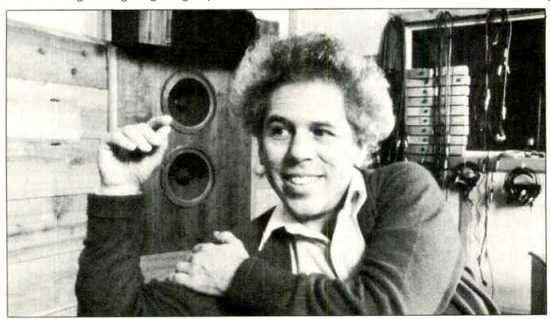
----------- "How long before digital gets perfected? FM never got perfected.
What makes us think digital's going to get, perfected?"
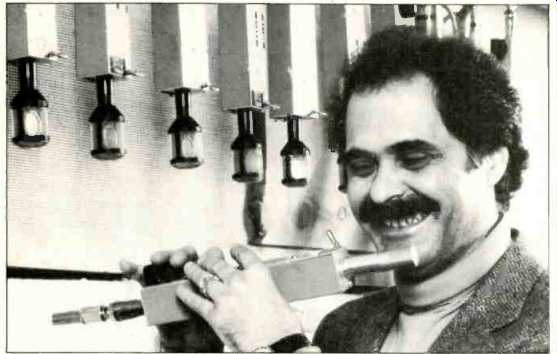
------ “All I'm doing is taking that which I know works, which my ear tells
me works, and trying to make it better."
You've said digital recordings are like a mock version of wine synthesized in a laboratory. It may taste like Lafitte-Rothschild, but you don't have a good time when you drink it.
Sax: I don't have a good time with digital. What I want to hear is somehow obscured. I don't have a good time, and that defeats the whole purpose. It doesn't have to do with accuracy or anything. Yet I can hear absolute virtues. Absolute virtues.
Such as?
Sax: Very good low-end transient response, because that's where the phase shift of the existing systems is small. Phase shift on the high end is unprecedentedly large compared to analog tape recording.
Mayorga: Absence of background noise.
Sax: And a steadiness. The piano doesn't move around.
Many people like digital for its dynamics. Yet others claim there's as much dynamic range to be had with analog recording.
Sax: There's actually more. On an analog tape or a disc, they give a signal-to-noise ratio as opposed to a dynamic range. In digital, for some reason or other, they decided to make signal-to-noise and dynamic range the same number. Basically, and there have been tests done in England by people with no axe to grind, you're accustomed on analog to hear music below the noise floor. In tests, there are people that hear music or tones 15 or even 20 dB below the noise floor. If you take what is now becoming in this town the industry standard, which is half-inch, 30-ips analog tape, it has a signal-to-noise ratio of about 76 dB. Now that doesn't sound very good compared to the 95 that is claimed for digital, but if you add the 20 dB below it that you can hear--it's not what you measure, it's what you can hear, and on digital, when you go to that last bottom digit, it turns off--you're now 96. And if you add the 18 or 15 that you can reliably get above it, albeit at a higher measured distortion than you would get on digital, you have another 10 to 15 dB, routinely, over anything claimed for digital--that you can hear. You know, I'm always talking about the circle. This great improvement to analog tape machines is only going back to the track width--almost the track width--and tape speed that came out in 1948 when Ampex put their first machine out. And by the way, the 23rd Ampex is in the other room. All they've done is gone back to the tape speed and the track width-almost. I say "almost" because it was quarter-inch full-track.
Mayorga: In '48. And the standard speed was 30 ips all the way until 1955 when the NAB decided to make a compromise and standardize it at 15 because it was more economical.
Sax: In the original Ampex manual it says 30 ips is here for music and 15 ips is included for speech. In the original manual. Now, the majority of tapes I get at The Mastering Lab and that other mastering facilities are getting, absolutely are half-inch 30 ips. And to my way of thinking, for what I want to hear, they have a wider dynamic range than any digital machine that is being used today. You'll find out what's wrong with the existing systems, which unfortunately are claimed to be perfect, when new ones come out.
It's interesting that once various manufacturers' DAD players began being compared, people stopped talking about perfection--at least for the current generation of machines. Analog had a long time to develop. How long will it take for digital to be perfected?
Mayorga: FM never got perfected. Television never got perfected. What makes us think digital's going to get perfected?
Well, do you think this particular storage medium, the Compact Disc, is a premature effort on the part of the audio industry?
Mayorga: What I see happening, what Doug has pointed out to me, is that history is repeating itself. A standard is being accepted, and it's a low standard, and we may well lock in, in 1983 here, to a standard that is not high enough for digital reproduction.
Is one of the two media, digital or analog, more perfectible than the other? If you were king, Doug, and you were able to say, "All right, everybody out there working on recording will work in the following mode and we will perfect it," which mode would you choose?
Sax: I've always been very, very relieved that I only speak as an individual and not a king. I think the marketplace will find its own solution with time, and I believe in that.
Mayorga: But you've dodged the question.
Sax: I wouldn't want the responsibility of picking it. I'm not anti-digital, I'm anti how far they've taken it. And I'm very leery. Once they lock into a standard, history has proven how difficult it is to obviate the standard. The argument that we've had 30 years to perfect analog tape recording, while digital is in its infancy, is an incorrect statement. The analog tape recorder, when it hit the streets, was in some ways arguably better than the analog tape recorder made today. It worked instantly out of the box. You can hear a 30-year-old tape, some of these Capitol monos that I've heard, and your mouth falls open with what they were doing 30 years ago.
It seems to me there's a consistent strand, a thread that runs through your thinking. In comments of yours that I've read, in what's been said here today, I sense a longing for simplicity. Am I misreading something?
Sax: No. I wish I could put it in my life.
Maybe I'm using simple techniques because everything else in this modern day is too busy and too complicated. One of the things that Lincoln and I both believe in greatly, when he arranges or we talk about the illusion of making a record--because it's all an illusion, it's just a piece of plastic-is the frustration in recording that less is always more. Three instruments totally satisfy your ears, and a hundred instruments can sound like four. It puts such strain on the whole medium. For sure, simplifying the electronics chain is not sonically worse. Three amps do not sound better than one, and 10 amps, guaranteed, won't sound as good as one or two. For music that acoustically balances in a room, I believe in a simple mike technique, yet it doesn't always make what is instantly obvious to the ear as an impressive record.
How do you feel as a musician, Lincoln? Is less more?
Mayorga: You certainly learn, when you arrange for recording, to make things as transparent as possible. Even some of the most experienced orchestrators and arrangers haven't quite learned that. They think, for example, if they have an organ doubling the cellos and the strings and all, that it will make it sound fuller. That would be so in a theater, where the organ would reinforce acoustically, but in a recording, where everything is a matter of balance and relativity, all that organ does usually is muck it up. Unless you need that color, unless you want that texture.
But it's not about to help, usually. You strive for a transparency, and particularly when we do direct-disc things, I've always tried to lay out the arrangements in such a way that you zero in on colors and aren't distracted with a whole lot of thickness of texture.
(Source: Audio magazine, Jan. 1984)
Also see: Doug Sax: On Current Record Technology and Music Systems of the Future (Mar. 1980)
Bringing Trackability Home (Jan. 1984)
Confessions of a Digital Recordist (Dec. 1983)
= = = =